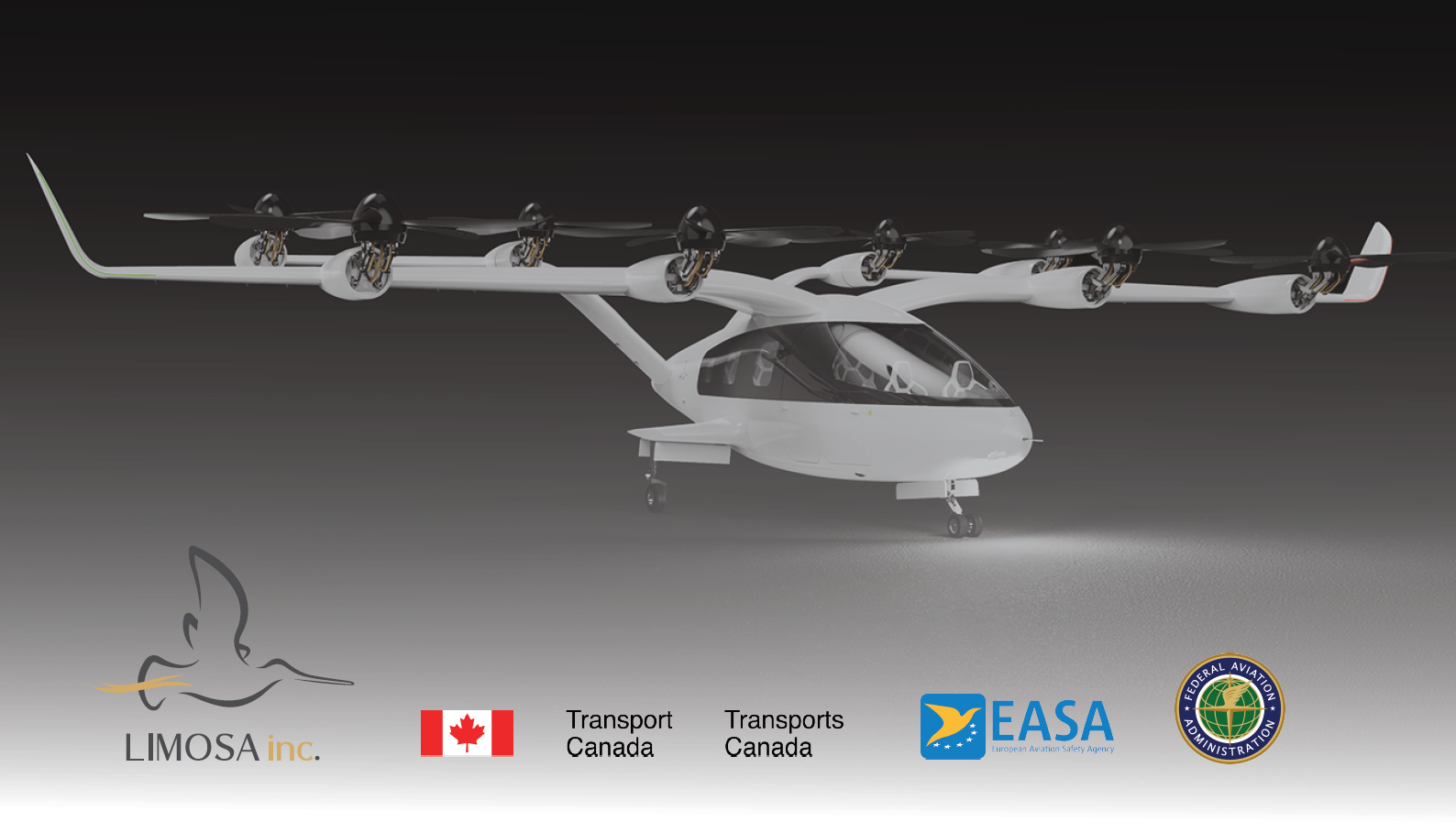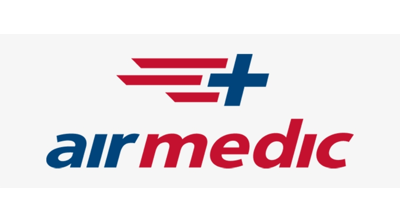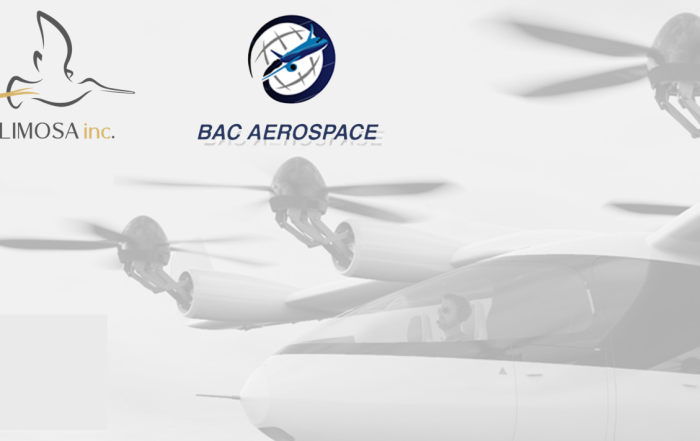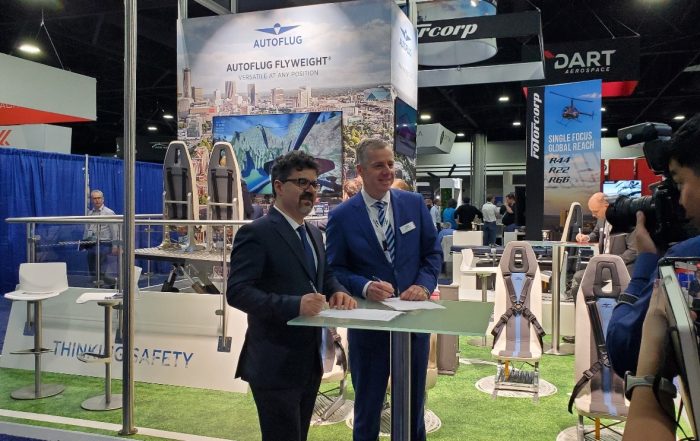As recently announced, Limosa Inc. has partnered with BAC Aerospace to become the first Canadian company to begin the certification process for an eVTOL. As this is a field few companies in the world have started the process for, it is pertinent to understand what the existing certification regulatory requirements are applicable to eVTOL, what other changes may be necessary, and how this knowledge base could apply to Limosa Inc. in the future. In this paper, we will examine how EASA and the FAA have addressed the challenge of certifying eVTOL aircraft, compare their respective approaches, and see what regulations they have included in their ongoing certification efforts of eVTOL aircraft. This will serve to help make more informed decisions as to the certification basis to be applied to the LimoConnect by Transport Canada Civil Aviation (TCCA).
What are the relevant sections?
Initially, the FAA had intended to employ the traditional approach of using FAR Part 21.17(a) to designate the applicable regulations for eVTOL aircraft. This approach would have allowed the eVTOL certification basis to be expressed as the regulatory requirements of FAR Part 23 Normal Category Aircraft (applicable to fixed-wing light aircraft) plus any applicable Special Conditions necessary to cater for the vertical takeoff and landing and other new and novel features. However, while certifying the Joby eVTOL, in May 2022, the FAA instead invoked Part 21.17(b), thus classifying eVTOLs as a Special Class of powered-lift aircraft. FAR Part 21.17(b) allows the regulator to assemble the certification basis using paragraphs selected from other FAR Parts, depending on which ones are relevant, namely, Part 23, 25, 27, 29, 33, and 35, as necessary. At this time, two Special Class Airworthiness Criteria documents have been issued by the FAA, one for the Joby JAS4-1 and one for Archer Model M001. Both documents define the respective certification criteria in terms of high-level Performance Based Regulations (PBR). It is noted the Canadian counterpart to FAR 21.17(b) is Canadian Aviation Regulations, CAR 521.17(b).
EASA has taken a different path and has been working on multiple documents targeted toward Urban Air Mobility (UAM) and Regional Air Mobility with regard to electric or hybrid propulsion VTOL aircraft. Specifically, EASA has issued the Special Condition for small-category Vtol aircraft, SC-VTOL-01. This high-level, performance-based Special Condition is supplemented by three Means of Compliance documents, MOC-SC-VTOL, MOC-2-SC-VTOL, and MOC-3-SC-VTOL, which provide the necessary details on acceptable ways of complying with the high-level SC-VTOL-01 Special Condition.
Separately, to cater to the electric propulsion aspects, EASA has issued SC E-19, a Special Condition for Electric/Hybrid Propulsion Systems, partly based on the CS-E requirements but tailored to electric and hybrid propulsion. SC E-19 is also written in an “objective-based” or Performance-Based-Regulations (PBR) format. Unlike SC-VTOL-01, no corresponding Means of Compliance documents to E-19 have been made public at this time.
The complex situation affecting eVTOL certification stems from the three major shifts from legacy certification approaches: the changeover from prescriptive regulations to performance-based regulations first introduced in Amendment 64 of FAR 23, the new & novel features associated with electric propulsion, and the new & novel features applicable to powered-lift aircraft. A complete understanding of these changes and the predecessor regulations (where applicable) and how to comply with them is essential in carrying out a successful eVTOL certification campaign.
What is the existing FAA certification regulatory requirements applies to Limosa?
As the LimoConnect is an aircraft with rotorcraft and airplane characteristics, it would be best to start off with the FAA’s guidelines for aircraft in general and learn what Limosa, BAC Aerospace and the TCCA can expect.
FAR Part 23 covers normal category airplanes, that is, general aviation fixed-wing aircraft. For the LimoConnect these regulations pertain to the CTOL mode of the aircraft. As an example, based on FAR 23.2005 requirements, if the LimoConnect were an eCTOL-only aircraft, TCCA would have classified it as a certification Level 3 aircraft given the target seating capacity falls between the 7-9 seats configuration. However, that specific regulation (FAR 23.2005) has not been used in the certification basis of the two eVTOL aircraft for which the Special Class Airworthiness Requirements have been published, hence the application of the regulations to LimoConnect remains an open question.
At this time, the regulatory requirements and means of compliance for electric propulsion fixed-wing aircraft (eCTOL) are being developed. In particular, ASTM committees F44.40 and F39.05 have already published means of compliance consensus standards for electric propulsion, including ASTM F3239 Standard Specifications for Electric Propulsion Systems (for the installation aspects) and ASTM F3338 Standard Specifications for Design of Electric Engines for General Aviation Aircraft. Further work is ongoing to address key aspects such as fire protection or Loss of Power Control, among many others. While the “new” performance based FAR 23 does cater partly to electric propulsion, multiple gaps remain, which will necessitate further amendments. Until such amendments are formally published, the authorities are expected to keep issuing Special Conditions to “close any gaps”, even in the case of eCTOL aircraft.
Another example of Part 23 that the LimoConnect would have to consider in an eVTOL/eCTOL context with regards to safety regulations is with regards to cabin fire extinguishing. For example, FAR 23.2325(f)(2) requires that for a level 3 aircraft, the passenger compartment is equipped with a handheld fire extinguisher in the cabin. While the certification basis of both Joby and Archer specifically excludes subparagraph (f)(2) due to the smaller seating capacity, it is expected this requirement will apply to LimoConnect. As it so happens, electric fires are the most common type of cabin fire in traditional aircraft too, so the current aircraft-grade fire extinguishers using Halon-replacement agents will still be able to be used for the LimoConnect. However, a bigger point of concern is to properly implement contingency measures for fires in inaccessible areas that neither the crew nor passengers would be able to access, such as around the battery systems. The regulatory development work on how exactly to address the issues of battery thermal runaway and possible resulting fires is ongoing.
For a eCTOL aircraft, the regulatory requirements pertaining to the propellers should be the same as with conventional aircraft as the electrical nature of the propulsion doesn’t affect how the mechanics of propeller fluid-structure interaction and dynamics work. However, these aspects are affected for eVTOL aircraft and additional investigations will be necessary to consider flutter/dynamics, and fatigue aspects of the propellers under the transition conditions from the lifting mode to the forward flight mode.
How can the new EASA eVTOLs regulatory requirements aid in the certification of LimoConnect?
The EASA SC-VTOL Special Conditions and its associated Means of Compliance documents, supplemented by the Special Condition SC E-19 for Electric-Hybrid Propulsions Systems represent the most comprehensive publicly available set of design requirements for eVTOL aircraft certification. While the Special Condition is performance-based, the MoC documents provide details on how a prospective applicant can show compliance. Unlike the FAA which allows the applicant to propose their own means of compliance tailored to their specific application, EASA MoC documents are of prescriptive nature.
However, the EASA rules are not harmonized with the North American approach; during the public comments review process EASA has declined to adopt numerous suggestions from both the FAA and TCCA. Numerous gaps and differences exist between the FAA and EASA approaches. The task of regulatory harmonization should fall to the authorities Certification Management Team (CMT). It is crucial for the successful growth of the AAM sector that a level-playing field is maintained to allow the mutual Europe-America acceptance of future eVTOL aircraft under the applicable Bilateral agreements and the respective foreign validation rules.
As Limosa is a Canadian company, with its key target market in Canada and the USA, the use of EASA material needs to be selectively cautious as to ensure a successful domestic certification process in Canada.
What will the future TCCA eVTOL regulations be?
In Canada, the overarching set of regulations governing the certification of aeronautical products is CAR 521. It is considered “law”, while the Airworthiness Manual, AWM 523 is a set of design standards. Accordingly, any regulatory material and the means by which it is promulgated needs to adhere to CAR 521. Notably, the Canadian CAR 521 is relatively similar to FAA’s 14 CFR Part 21 (albeit with numerous differences) but is fundamentally different from EASA’s Part 21. Historically, TCCA have been siding with the FAA when it comes to adoption of new design standards. In fact, the current Canadian AWM 523, 525, 527, 529, and 533 are direct equivalents of FAR 23, 25, 27, 29, and 33, respectively, with minor changes to account for Canadian-specific differences.
For these reasons we expect that Transport Canada will follow in the footsteps of the FAA and introduce the eVTOL regulations in a product-specific, performance-based format, as the FAA has done for Joby and Archer. The exact form and the mechanism by which these requirements will be published remains under discussion.
However, the EASA MoC documents may be used by Limosa as a starting point in negotiating the applicant-proposed means of compliance, with changes necessary to tailor-suit the MoC to the LimoConnect design. As the field of eVTOL certification is a rapidly evolving one, we can expect further course corrections down the road.




